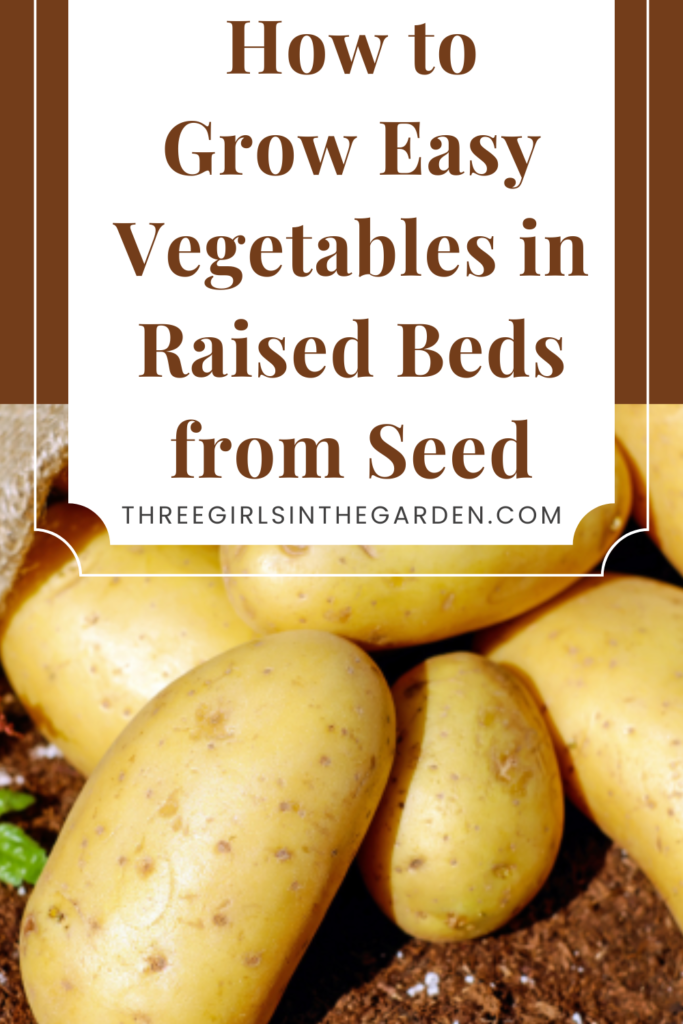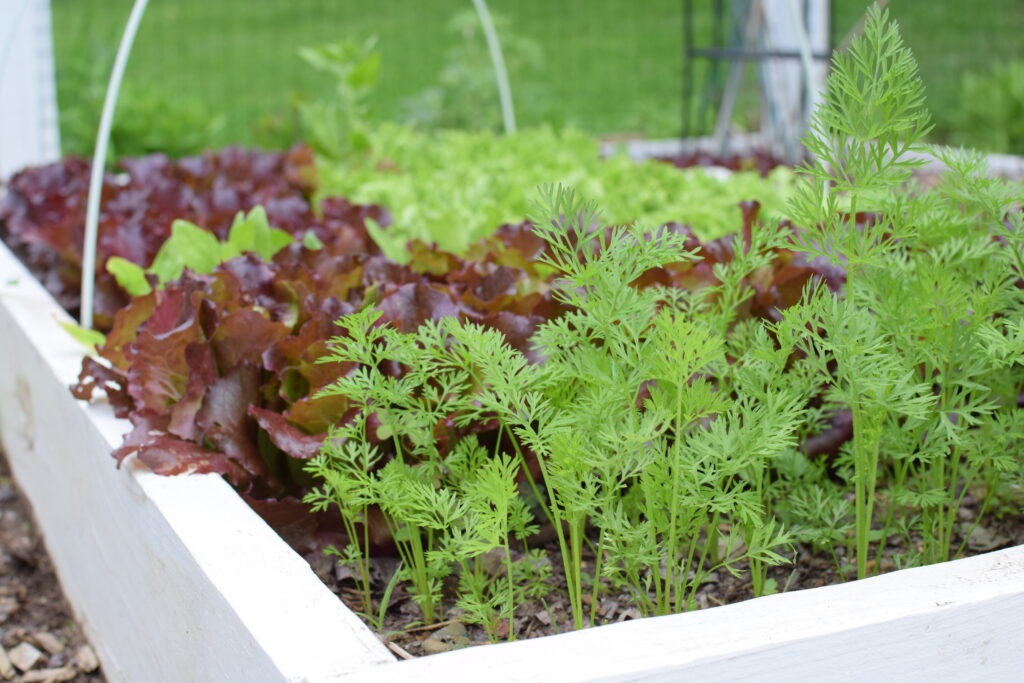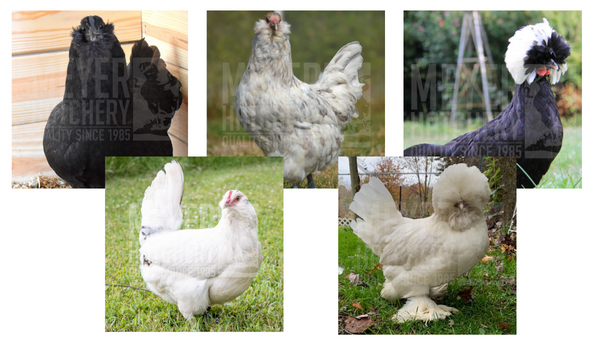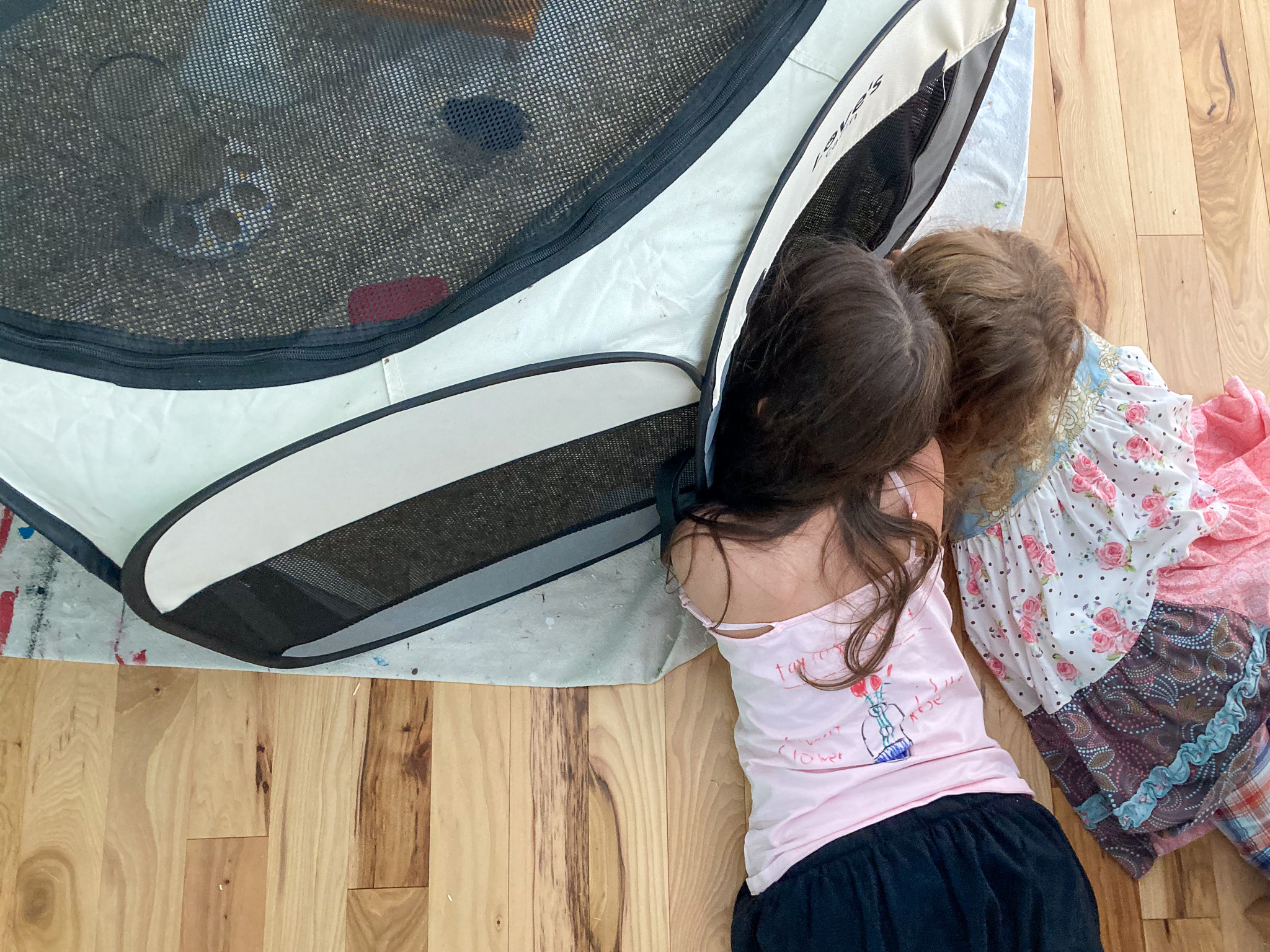How to Grow Easy Vegetables in Raised Beds from Seed | Beginner Gardener Part 3
Let’s grow some easy vegetables in raised beds from seed. It’s so much easier than you think!
Welcome back to part 3 of our beginner gardener series. So far we’ve covered raised beds in part 1 and easy vegetables to grow in part 2. Be sure to check out those posts so you’re all caught up.
Today in part 3 we will look at how to plant the first 6 easy vegetables in raised beds from seed! In part 4 we will cover how to grow the last 6 vegetables from plants.
When you know how to grow each plant, as well as how much space each particular plant needs, you can easily maximize the layout of your vegetable garden. We are aiming for a very full and productive raised bed!

6 Spring Vegetables from Seed in Raised Beds
These first 6 crops are easily grown from seed. They actually prefer to be grown from seed as opposed to plant starts. Most of these plants can handle a light frost which gives you more time to grow!
1. Sugar Snap Peas
Sugar snap peas are easily grown from seed in the spring and then later in summer. They don’t like heat, so I start snap peas 3 weeks before my last frost, and again at the beginning of August.
Press pea seeds 1″ deep, about 1″ apart. They need support to climb and grow well climbing an obelisk or a trellis.
You can get an inexpensive obelisk like this or a more expensive obelisk like this. Obelisks are available for sale at nursery and landscape centers, as well as online. You can also make one out of sticks/stakes, and then tie it at the top, like a teepee, and have your peas grow up the teepee.

I grow my snap peas on a trellis like this. It spans the distance of 2 raised beds and the peas grow up each side. This is a family favorite crop. In fact, fresh sugar snap peas are SO good, they never make it inside. They are always eaten straight from the vine.
2. Lettuce and Other Greens
Greens grow well in cooler temperatures and can be planted directly from seed.
Lettuce likes to be planted about 1/8″ deep. You want to just barely cover the seed with soil, press them into the soil with your hands, and water them every day.
I like to grow lettuce tightly to crowd out weeds and shade the soil. I’ll grow single heads of lettuce every 4-6″. However, I prefer to scatter the seeds around the base of other plants that grow tall…like tomatoes. Growing lettuce under tomatoes helps to shade the soil and the roots of the tomato plant. Plus, it saves space as you’re already using this space for tomatoes.
When you scatter lettuce seeds, lightly cover with soil and water every day until the seeds grow. You can just trim the pieces of lettuce you want to eat, leaving the rest of the plant for another day.
3. Carrots
Carrots can be started from seed in the spring, summer and fall. They love cooler weather and can take a frost!
Carrots can be tricky if you try too hard. I know that sounds weird, but it’s true. They like to be sown near the surface of the soil. This means you can scatter the carrot seeds, then VERY lightly cover with compost/soil, and press them into the soil so they make contact.
I like to grow carrots along the edge of my raised beds, so I sprinkle them about 1″ from the inside edge. They only need about a 1-2″ of space to grow. When your carrot tops are about 2-3″ tall, you’ll have to thin them down. This means to pluck out the extra seedlings so you have 1-2″ of space between each carrot.

4. Onions
Onions can be planted 6 weeks before your last frost. They can also be planted after your last frost if you missed the early window.
Onions can be grown from seeds (when started early indoors), plants (starts), and from sets.
We won’t cover seeds here as indoor seed starting is its own topic all together.
Onion plants/starts are usually sold in bunches and look like green onions. You’ll pull each onion plant apart, and place it in a hole 1″ deep. Space plants 4″ apart to allow for onion heads to form.
Onion sets look like tiny onions. You can find them in bags anywhere that sells plants. They can be planted in a hole 1″ deep. The top of the set (the tiny bulb) should be just under the surface, if not at the surface level.
Onions are useful in the garden as they can also help deter pests from other more sensitive crops like tomatoes, peppers, and lettuce.
So feel free to plant onions near the base of these plants. This is called companion planting.
5. Garlic
Garlic is a no fuss plant…my favorite kind! It’s a bit different in that garlic is planted in the fall, about 4-6 weeks before the first frost. Use this calculator to find your first fall frost.
Garlic is planted by what’s called “seed garlic”. It’s simply a clove of garlic. Grocery store garlic can be sprayed with chemicals to keep it shelf stable so you don’t want to use that. If you know someone that grows garlic, get a head from them. If not, you can order garlic online. Another option is to try growing organic garlic from the grocery store. It may have a better chance of growing into a new head of garlic.
Take a head of garlic and pull apart each clove, leaving as much of the papery covering on the cloves. Plant garlic cloves about 1″ deep, and about 3″ apart so they form nice sized heads. You’ll be planting these in the fall, so you’ll plant around your other plants in areas that have a bit of space left in them.
I have found that nothing touches my garlic plants. I don’t have to protect them from deer or rabbits. That is another huge bonus of garlic!
6. Potatoes
Potatoes are another crop that can be grown a bit early. They can be planted about 2-3 weeks before the last frost. They cannot, however, take a frost. The reason you can plant them early is that it takes about 2-3 weeks for the green stems to grow out of the ground. So don’t start too early!
Potatoes grow really well in raised beds as the potatoes grow underground and love loose, soil. Potatoes are grown from seed potatoes…which is simply a potato with eyes. You can get special labeled “seed potatoes” from nursery centers, Lowes, and Home Depot. I usually buy organic potatoes, leave them in a paper bag for a week until they form eyes, and then plant them.
Place a seed potato about 4-6″ deep in a hole. You’ll want to place them about 8″ apart to allow for below ground potato growth. Cover with soil and watch the greenery start to grow. You may need to add a few more inches of soil to the top of your planting site to keep the new potatoes covered with soil. You can also use hay/straw to cover the potato plant once it starts growing.
New potatoes may start to push to the surface. You want to cover them before they are near the surface level. So feel free to add soil/straw/leaves to the top of the plant once it starts growing, in about 3-4 weeks.
Cool Season Vegetables from Seed in Raised Beds
Growing vegetables in raised beds from seed is so simple! Once you get started, you may wonder why you never did this before.
In part 4 of this series we will cover how to plant and grow the next 6 vegetables in raised beds. These are the heat loving crops we all know and love.
If you have any questions, I’m happy to help. Ask away!
You can also join me on Pinterest where I love finding gardening inspiration. See you next time!






